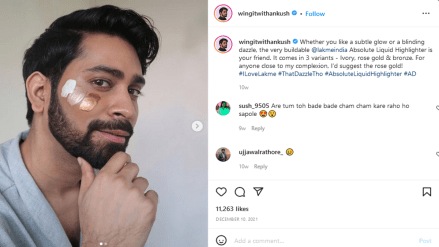Fuelled by social commerce and the rise of direct-to-consumer brands, influencer marketing is registering fast-paced growth in India. The influencer marketing industry, which is worth about Rs 900 crore, is slated to grow at a CAGR of 25% until 2025, according to Influencer Marketing Report 2021 from INCA (GroupM’s influencer marketing arm). Brands are expected to spend about Rs 1,250 crore on engaging influencers in their digital campaigns in 2022. As per the latest GroupM This Year Next Year report, influencer marketing accounts for 2.5-3% of overall digital spends in India. This is expected to almost double by 2025, reaching Rs 2,200 crore.
This growth of influencer marketing has attracted the attention of the Advertising Standards Council of India (ASCI). About a year ago, the ad industry’s self-regulatory body laid down guidelines for influencer marketing. It said that influencers must disclose if a piece of content they are posting to their social media or video streaming platform accounts is an advertisement, to help consumers distinguish promotional content from other content. Since then, influencer marketing has taken a new avatar in the form of social and live commerce.
Monetising fan base
According to the Global Web Index, the average Indian spent around 2.29 hours every day on social media in 2020. And this is steadily growing. Gunjan Arya, CEO, OML, a branded and OTT content production house, says that partnering with creators is one of the most credible ways of reaching consumers online.
Previously, brands mainly used influencer marketing for top-of-the-funnel marketing initiatives. However, the role of influencer marketing has evolved over time. Kunal Sawant, business head, INCA, says that brands are using influencer marketing to achieve all types of marketing objectives and across the consumer funnel, right from building awareness to driving consideration and building brand loyalty.
Brands choose an influencer and platform based on the objective. However, Instagram, which has about 230 million users in India (as per Statista), is “the preferred destination for executing influencer marketing campaigns,” says Sawant. Short-video format platforms like Moj, MX Takatak, Josh, etc, that offer engaging content formats for brands to collaborate with creators, are also preferred.
‘Selling’ point
The influx of social commerce platforms and online retailers experimenting with live commerce is driving the creator economy, too. Rohit Krishna, general partner, WEH Ventures, a VC firm that has invested in social commerce platform Trell, says tracking sales on social commerce platforms is easier compared to plain social media platforms. “An influencer earns a 5-10% commission on the sale that they drive, and therefore benefit from collaborations with social commerce platforms.”
Arya says when more commerce moves online and content consumption also shifts online, “we will see many bridges and many linkages”. Creator Dolly Singh, who is managed by OML, hosted a live sale on Nykaa in 2021. Roposo has shifted from short-form videos to live commerce. Arya gives the example of live commerce events in the Philippines and Malaysia where creators put up content and, depending on the click through rate, receive an additional incentive. “Further, we identified clips that were performing well and ran them as digital media creatives,” she adds.
Media buyers say that engagement on social media posts that are tagged as ‘ads’ tends to be lower than normal posts; this holds influencers back from disclosing an ad. Regulators do not accept this as a reason to skip a disclosure. ASCI general secretary Manisha Kapoor says that influencers, ad agencies, and brands will need to work together to create content that, despite being an ad, is entertaining.
Krishna says the main challenge with influencer marketing is the non-availability of a comprehensive dashboard on social media platforms to track conversion.
